Cloud Sustainability: The Rise of Green Cloud Solutions and What They Mean for Your Business

Introduction
As businesses increasingly rely on cloud computing to manage their operations, neglecting cloud sustainability can drive significant consequences.
Data centers, which power cloud services, consume vast amounts of electricity (comparable to the energy needs of entire cities). This substantial energy consumption leads to higher operational costs and contributes to environmental degradation.
Moreover, as consumers become more environmentally conscious, many cloud providers are stepping up with green energy solutions and innovative designs that minimize their environmental impact while offering businesses a range of benefits.
This blog explains how cloud providers are adopting green energy practices and sustainable designs to reduce their carbon footprint. We will examine the technologies behind these changes, their benefits for businesses, and actionable steps to transition to eco-friendly cloud solutions.
By understanding the rise of green cloud computing, businesses can make informed decisions to save costs, enhance their brand image, and support a more sustainable future.
What is Cloud Sustainability?
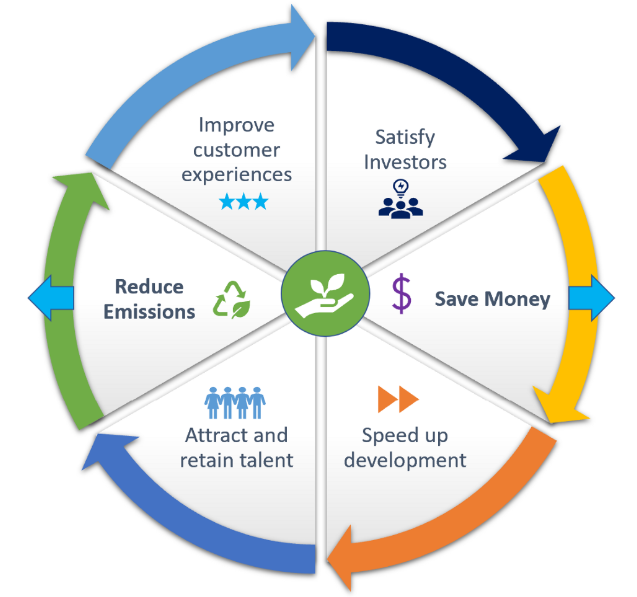
Cloud sustainability refers to reducing the environmental impact of cloud computing by adopting energy-efficient and eco-friendly practices. Data centers, which power cloud services, consume vast amounts of electricity to run servers and cooling systems. This contributes to high carbon emissions. Cloud sustainability aims to tackle this by integrating green energy sources, optimizing operations, and using smarter technologies.
Key practices include using renewable energy like solar and wind to power data centers. Energy-efficient servers, advanced cooling systems such as liquid cooling, and AI-powered energy management further reduce power consumption. Providers also implement modular data center designs that scale efficiently with demand, minimizing wasted resources.
Cloud sustainability involves responsible e-waste management. Outdated hardware is recycled or repurposed to prevent environmental harm. By adopting sustainable cloud solutions, businesses can lower their carbon footprint, improve resource utilization, and contribute to global efforts to combat climate change while supporting their operational needs effectively.
Why Should You Care about Cloud Sustainability?
Cloud sustainability benefits your business in many ways.
Cost Reduction
Energy-efficient cloud services consume less power, lowering operational expenses, especially for businesses handling large-scale data.
Regulatory Compliance
Governments are introducing stricter environmental regulations. Green cloud solutions ensure you meet legal requirements and avoid penalties.
Brand Reputation
Consumers and stakeholders increasingly favor businesses with eco-friendly practices. Using green cloud services showcases your commitment to sustainability.
Operational Efficiency
Sustainable cloud providers use optimized technologies, such as virtualized servers and AI-based energy management, ensuring reliable and faster services.
Carbon Emission Tracking
Many providers offer tools to monitor and reduce your carbon footprint, helping you achieve specific sustainability goals.
Data Security and Longevity
Modern green data centers use advanced designs and resilient hardware to ensure secure and efficient data storage.
Future-Proofing
Adopting eco-friendly practices prepares your business for upcoming technological and environmental challenges.
How Are Cloud Providers Going Green?
Cloud providers are adopting innovative practices to minimize their environmental impact. Here’s how some of the leading companies are implementing green solutions and what it means for businesses:
1. Amazon Web Services (AWS)
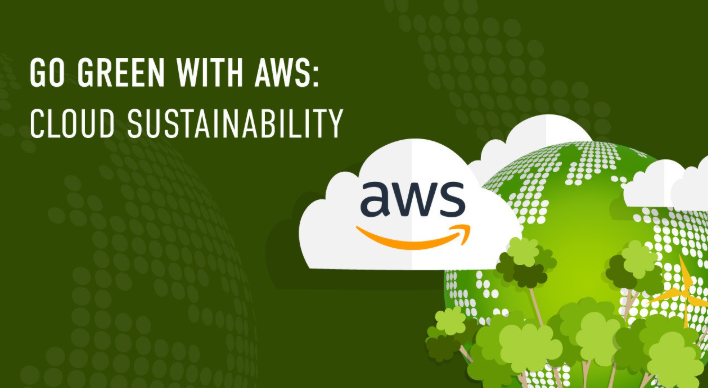
AWS is committed to running its global operations on 100% renewable energy by 2025. They have invested heavily in solar farms, wind farms, and large-scale battery storage systems. AWS has also developed energy-efficient hardware for its data centers and offers tools like the AWS Carbon Footprint Tool to help businesses track their cloud-related emissions.
Implications: Businesses using AWS benefit from lower emissions, access to renewable energy-backed services, and tools to monitor sustainability metrics. These initiatives also lead to more cost-effective operations and improved brand credibility.
2. Microsoft Azure
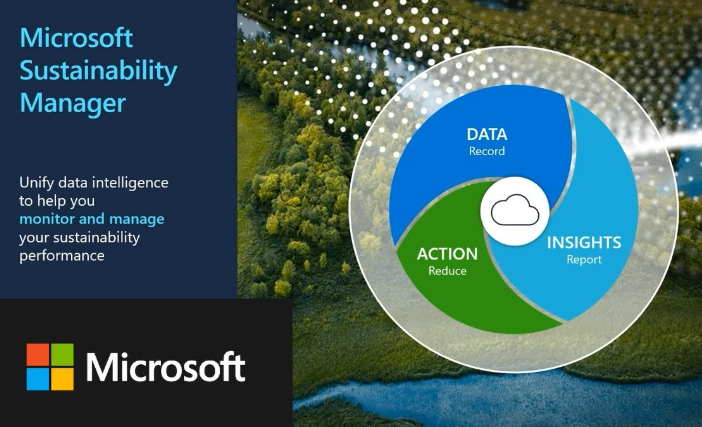
Microsoft aims to become carbon negative by 2030. They use renewable energy, advanced energy storage systems, and AI-powered load balancing to optimize energy usage in their data centers. Microsoft also works with suppliers to ensure they transition to 100% carbon-free electricity.
Implications: Azure helps businesses meet sustainability goals by providing a platform that reduces carbon emissions. Partnering with Azure can also align companies with environmentally conscious clients and stakeholders, improving their market positioning.
3. Google Cloud
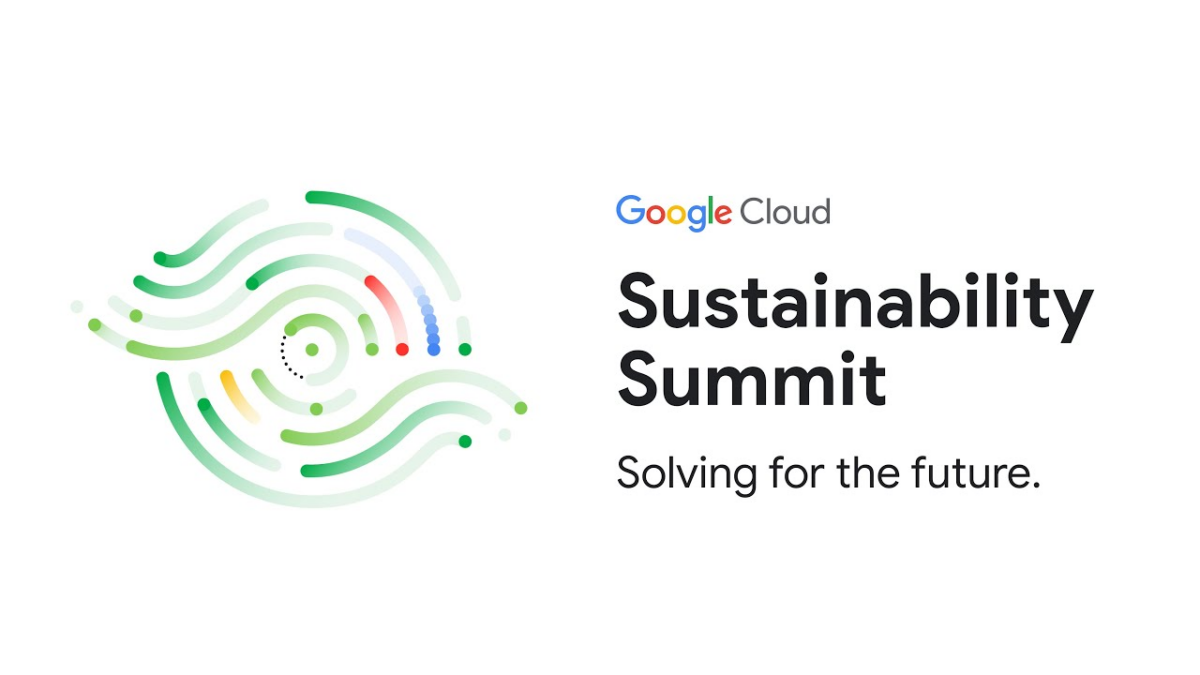
Google has been matching 100% of its electricity use with renewable energy since 2017. Their AI-driven cooling systems cut cooling energy consumption by 40%, and their Tensor Processing Units (TPUs) increase computational efficiency. Google also uses recycled water for cooling in some facilities.
Implications: Businesses using Google Cloud enjoy reduced costs due to energy-efficient infrastructure and can claim alignment with a provider committed to zero-carbon energy. These efforts also boost the reliability and scalability of their services.
4. IBM Cloud
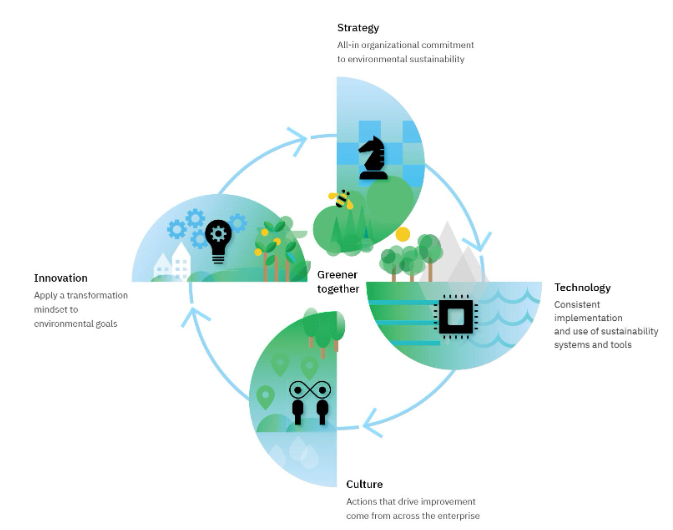
IBM is optimizing energy efficiency in its data centers by improving power usage effectiveness (PUE). They use analytics and automation to monitor energy consumption in real-time and employ modular designs to scale infrastructure without wasting resources.
Implications: IBM provides businesses with a highly efficient platform that reduces operational costs. Their focus on automation and modular systems ensures better performance and scalability for growing organizations.
5. Oracle Cloud
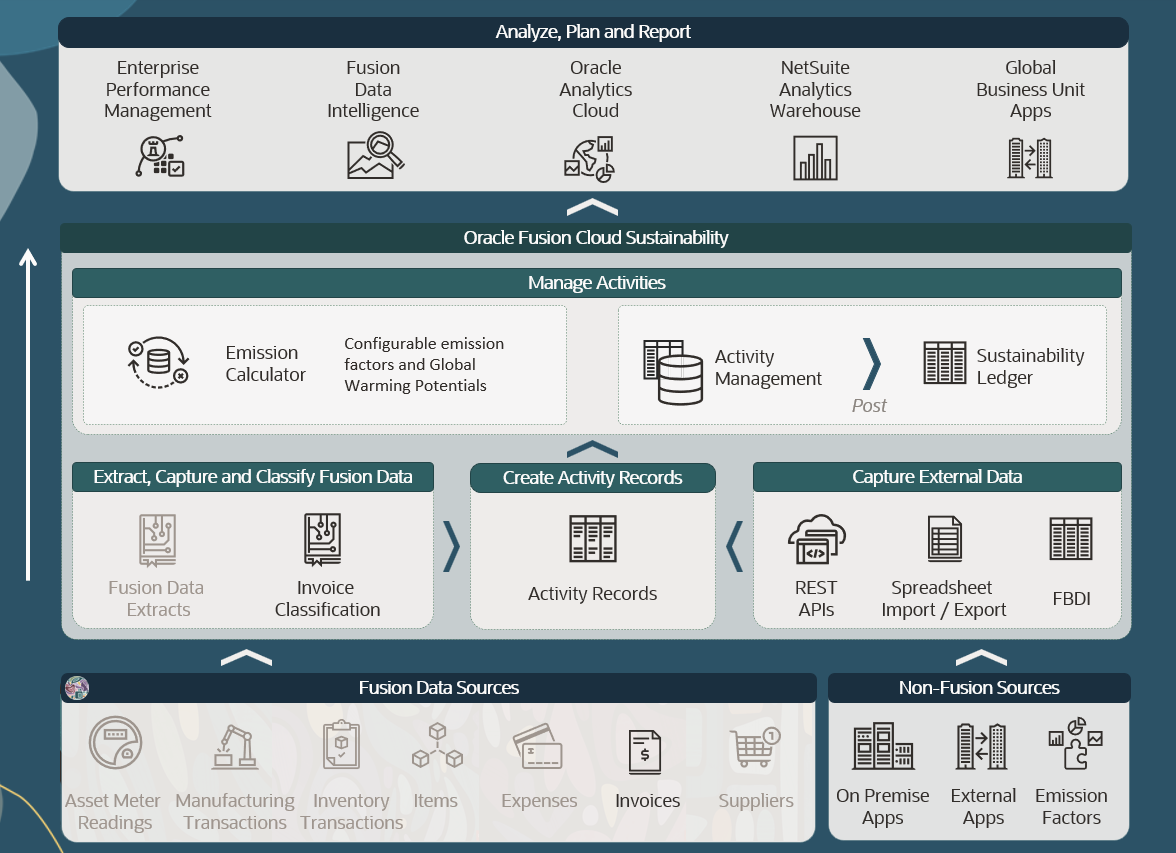
Oracle uses renewable energy and water-efficient cooling systems to power its data centers. They follow circular economy principles by recycling hardware components, reducing e-waste, and lowering manufacturing emissions.
Implications: Oracle’s approach allows businesses to operate sustainably while benefiting from energy and resource-efficient solutions. These practices improve long-term cost efficiency and contribute to corporate environmental responsibility.
6. Alibaba Cloud
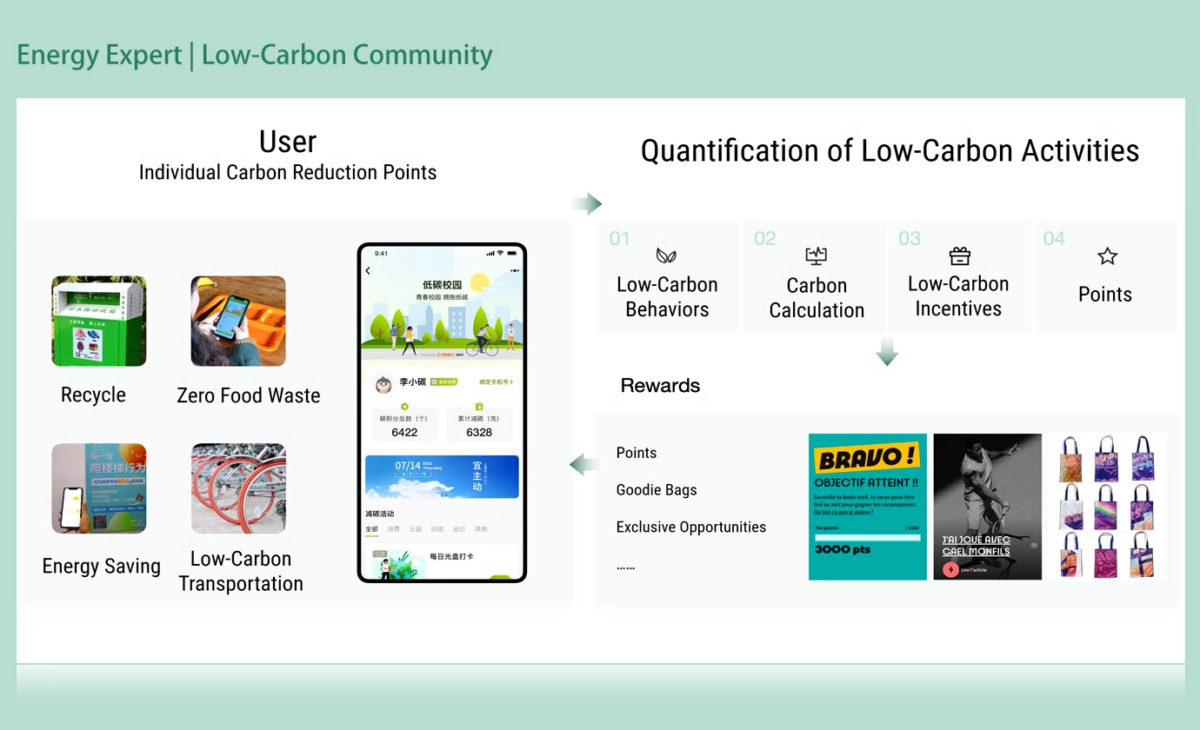
Alibaba employs liquid immersion cooling, which lowers cooling energy consumption by up to 70%. They have also developed custom chips for processing data more efficiently, reducing the overall power requirements of their cloud infrastructure.
Implications: Businesses using Alibaba Cloud save on energy costs while benefiting from cutting-edge cooling and processing technologies. These innovations ensure high performance with reduced environmental impact.
7. Salesforce

Salesforce operates on carbon-neutral infrastructure by using renewable energy credits (RECs) and verified carbon offsets. They offer tools like Sustainability Cloud to help clients monitor and manage their carbon footprints.
Implications: Salesforce’s carbon-neutral services allow businesses to meet sustainability goals while tracking their environmental impact in real-time. This builds trust with environmentally aware customers and stakeholders.
8. Equinix
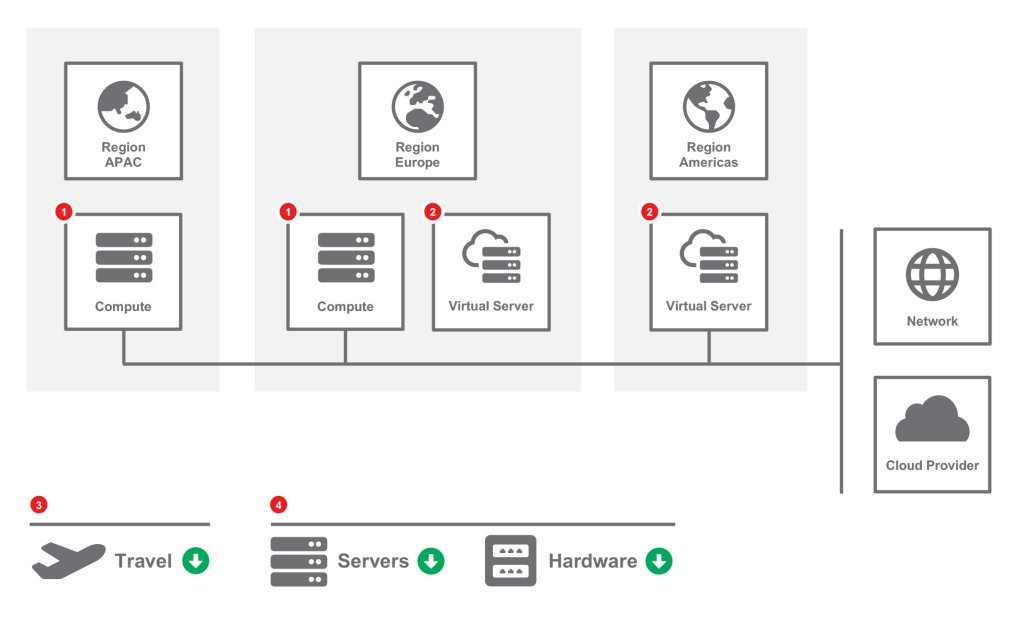
Equinix powers its global operations with 100% renewable energy, supported by on-site solar installations and partnerships with wind and hydroelectric suppliers. They also use heat recovery systems to repurpose waste heat for nearby facilities.
Implications: Businesses partnering with Equinix gain access to sustainable and energy-efficient data center services. Their commitment to clean energy reduces operating costs and enhances environmental accountability.
How Do These Green Practices Work?
Cloud providers implement several green solutions to minimize energy use and environmental impact. Here’s how they work, with equal emphasis on each solution:
1. Renewable Energy Integration
Cloud providers are transitioning their operations to renewable energy sources, such as solar, wind, and hydropower. Solar farms capture sunlight and convert it into electricity, while wind turbines generate power through wind movement.
Many providers sign Power Purchase Agreements (PPAs) with renewable energy producers to ensure their data centers are backed by green energy. Providers like AWS and Google also invest in on-site renewable energy projects to directly power their facilities.
Why Does It Matter?
Renewable energy eliminates reliance on fossil fuels, significantly reducing carbon emissions. It ensures sustainable operations while helping businesses meet their environmental commitments.
2. Energy-Efficient Cooling Systems
Cooling systems are critical for data center operations. Providers use advanced methods like liquid cooling, which immerses servers in a non-conductive liquid to absorb and dissipate heat. Free air cooling leverages ambient outdoor air instead of energy-intensive air conditioners. AI-powered cooling predicts workload peaks and dynamically adjusts cooling levels, further optimizing energy use.
Why Does It Matter?
Cooling typically accounts for 30-40% of data center energy use. These methods drastically reduce energy consumption, lower operating costs, and extend hardware lifespan.
3. Custom Hardware Design
Providers develop custom hardware like Google’s Tensor Processing Units (TPUs) and Amazon’s Nitro Chips to process tasks with maximum energy efficiency. These chips are optimized for specific workloads, consuming less power than general-purpose processors. Advanced materials and compact designs also improve energy performance.
Why Does It Matter?
Custom hardware reduces energy wastage and increases computational speed, enabling businesses to achieve better results with less resource use.
4. Modular Data Centers
Modular data centers consist of pre-engineered units that are added or removed based on current demand. These units are designed to optimize airflow, cooling, and energy distribution within a smaller, more efficient footprint. Providers can expand capacity without overbuilding infrastructure.
Why Does It Matter?
Modular designs prevent resource overuse, reduce operational waste, and ensure energy is only consumed when necessary, improving cost and energy efficiency.
5. Waste Heat Recovery
Heat recovery systems capture the heat generated by servers and reuse it for external purposes. Heat exchangers transfer this energy to nearby facilities, such as office buildings or greenhouses, where it can be used for heating needs.
Why Does It Matter?
This practice turns a byproduct of data center operations into a valuable energy source, reducing waste and minimizing reliance on additional heating systems.
6. E-Waste Recycling and Management
Outdated hardware is dismantled, with components like rare earth metals and copper recovered for reuse. Providers ensure proper recycling processes for non-reusable materials, minimizing environmental harm.
Why Does It Matter?
Responsible recycling prevents harmful materials from entering landfills, conserves natural resources, and supports a circular economy, reducing the environmental burden of technology.
What Does This Mean for Your Business?
Adopting green cloud solutions benefits your business in multiple ways:
1. Lower Operational Costs
Green cloud solutions rely on energy-efficient technologies like advanced cooling systems and custom hardware, which reduce power consumption significantly. Providers optimize server performance using AI, ensuring that only necessary energy is used. This efficiency leads to lower energy bills, especially for businesses handling large-scale data or running continuous workloads.
2. Improved Customer Trust
Consumers increasingly prefer brands that prioritize sustainability. Partnering with cloud providers that use renewable energy and sustainable practices demonstrates your commitment to environmental responsibility. Transparent reporting of reduced carbon footprints through tools offered by providers like AWS or Salesforce further enhances trust and loyalty among environmentally conscious customers.
3. Regulatory Compliance
Governments worldwide are implementing stricter regulations on carbon emissions. Green cloud providers ensure compliance by operating on renewable energy and adhering to emission standards. This means your business can meet legal requirements without additional adjustments, reducing future risks and penalties.
4. Increased Operational Reliability
Modern green data centers use AI to predict and manage workloads, improving efficiency and uptime. Features like smart load balancing and modular designs ensure stable operations, even during peak demand. Businesses benefit from consistent, reliable cloud performance.
5. Environmental Accountability
Many providers offer tools to monitor your carbon usage and energy efficiency. For example, Microsoft Azure’s sustainability dashboard helps businesses track their energy use and set reduction goals. This fosters accountability and supports long-term environmental planning.
6. Competitive Advantage
By adopting sustainable practices, businesses gain an edge over competitors still reliant on traditional systems. Green cloud solutions align your business with modern sustainability goals, helping you stand out in the market and appeal to eco-conscious partners.
How to Get Started with Green Cloud Solutions
Here are key steps to begin your journey with green cloud solutions:
1. Evaluate Your Business Needs
Start by analyzing your current and future cloud requirements. Identify workloads, data storage needs, and applications that are critical for your operations. This helps you select a cloud provider whose offerings align with your specific goals, including sustainability metrics such as carbon-neutral services or energy-efficient infrastructures.
2. Research Cloud Providers
Compare the sustainability initiatives of major providers like AWS, Microsoft Azure, and Google Cloud. Review their use of renewable energy, custom hardware, and energy-efficient cooling technologies. Study their carbon reporting tools and transparency in achieving green goals to ensure they meet your operational and environmental standards.
3. Monitor and Track Usage
Adopt monitoring tools that provide insights into your cloud energy consumption and carbon emissions. Many providers offer dashboards, such as Google Cloud’s Carbon Footprint tool, which helps you track your environmental impact and optimize resource use based on real-time data.
4. Optimize Workloads
Schedule computing tasks during periods when renewable energy sources are more available. For instance, Google Cloud schedules non-urgent workloads when solar or wind energy production peaks, ensuring efficient use of clean energy while reducing emissions during high-demand hours.
5. Prioritize Energy-Efficient Practices
Leverage provider features like AI-driven resource optimization, virtualization, and scaling to reduce energy waste. Ensure your applications are designed to operate efficiently, minimizing resource consumption and enhancing performance.
6. Engage with Provider Support
Collaborate with your cloud provider to implement customized green strategies. Providers offer consultations to align their solutions with your business operations, enabling you to achieve sustainability goals without compromising performance.
The Future of Green Cloud Computing
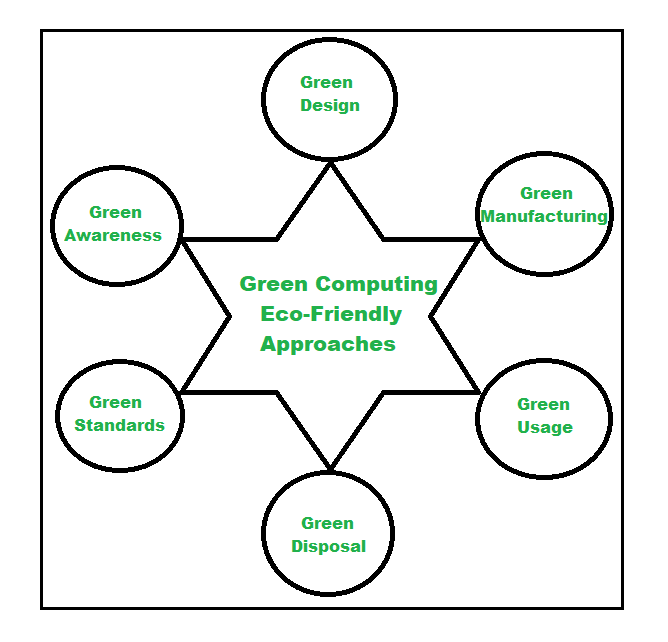
These developments aim to enhance efficiency, reduce environmental impact, and promote sustainability in cloud computing.
- AI-Driven Energy Management: Artificial intelligence is being used to predict and adjust power consumption in real-time, optimizing energy use in data centers.
- Edge Computing: Processing data closer to its source reduces the need for transmission to central servers, lowering energy consumption and latency.
- Zero-Carbon Data Centers: The development of data centers that aim to eliminate greenhouse gas emissions from their operations is a crucial trend.
- Serverless Computing: This model allows developers to build and run applications without managing servers, leading to more efficient resource utilization.
- Quantum Cloud Computing: The integration of quantum computing into cloud services promises significant advancements in processing capabilities and energy efficiency.
- AI-Driven Cloud Management: Artificial intelligence is being used to optimize cloud operations, leading to improved efficiency and reduced energy consumption.
- Integration of AI, ML, IoT, and Blockchain: The future of cloud computing includes the integration of artificial intelligence, machine learning, the Internet of Things, and blockchain technologies, enhancing capabilities and efficiency.
- Multi-Cloud and Hybrid Strategies: Adopting multi-cloud and hybrid strategies allows for more flexible and efficient use of resources, contributing to sustainability efforts.
FAQs
1. What is green cloud computing?
Green cloud computing refers to using sustainable practices in cloud infrastructure. This includes energy-efficient data centers, renewable energy sources, advanced cooling systems, and recycling hardware. The goal is to reduce energy use, minimize carbon emissions, and make cloud services environmentally friendly while maintaining performance and reliability.
2. How do green cloud solutions lower costs?
Energy-efficient technologies, such as optimized cooling and custom hardware, consume less power, reducing operational expenses. By leveraging renewable energy and AI-driven energy management, cloud providers also reduce overall energy wastage, allowing businesses to access cost-effective and sustainable cloud services.
3. Why should businesses switch to green cloud solutions?
Green cloud solutions help businesses reduce their carbon footprint, comply with environmental regulations, and align with customer preferences for sustainability. They also improve operational efficiency and reliability, enhancing overall performance while supporting environmental goals.
4. How do cloud providers ensure sustainability?
Cloud providers implement practices like using renewable energy, liquid cooling, and waste heat recovery. They also design custom hardware for energy efficiency and recycle outdated equipment to reduce e-waste. These efforts ensure reduced environmental impact and long-term sustainability for their operations.
Conclusion
In conclusion, green cloud computing is an essential step towards a sustainable future. By adopting renewable energy sources, energy-efficient technologies, and responsible e-waste management, cloud providers are significantly reducing their carbon footprint. Businesses that transition to these eco-friendly solutions not only contribute to environmental preservation but also benefit from cost savings, improved operational efficiency, and a stronger brand image.
As technology continues to evolve, green cloud practices will play an increasingly important role in business operations. Adopting sustainability in the cloud ensures compliance with regulations, improves customer trust, and positions companies as leaders in the drive for a greener, more responsible future.
